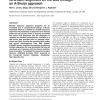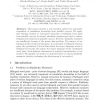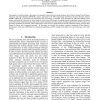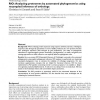168 search results - page 13 / 34 » Using Similarity Flooding for Extracting Similar Parts of Pr... |
NAR
2006
13 years 7 months ago
2006
Multiple sequence alignment programs are an invaluable tool in computational biology. A-Bruijn Alignment (ABA) is a method for multiple sequence alignment that represents an align...
KES
2005
Springer
14 years 27 days ago
2005
Springer
This paper presents a new learning method for automatic acquisition of translation knowledge from parallel corpora. We apply this learning method to automatic extraction of bilingu...
BMCBI
2008
13 years 7 months ago
2008
Background: Multiple sequence alignments are a fundamental tool for the comparative analysis of proteins and nucleic acids. However, large data sets are no longer manageable for v...
LREC
2008
13 years 8 months ago
2008
The majority of work described in this paper was conducted as part of the Recovering Evidence from Video by fusing Video Evidence Thesaurus and Video MetaData (REVEAL) project, sp...
BMCBI
2002
13 years 7 months ago
2002
Background: When analyzing protein sequences using sequence similarity searches, orthologous sequences (that diverged by speciation) are more reliable predictors of a new protein&...




